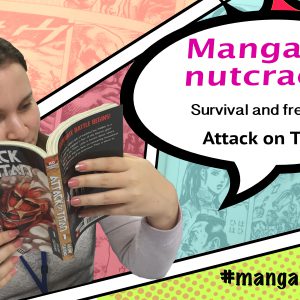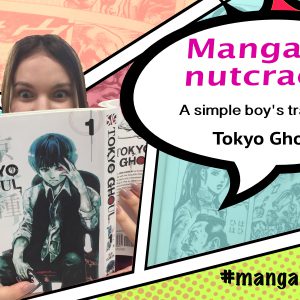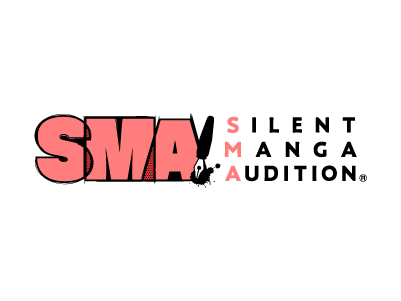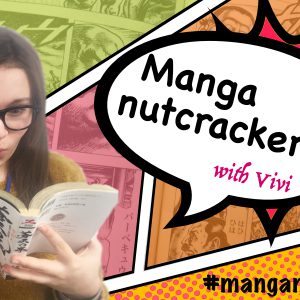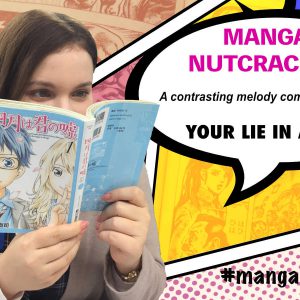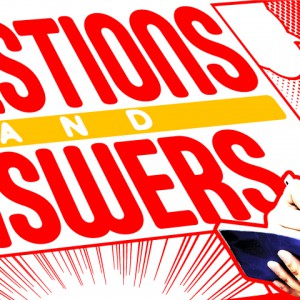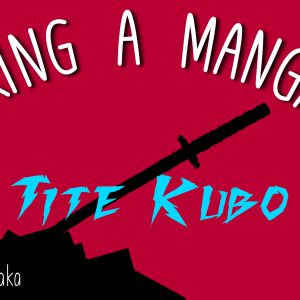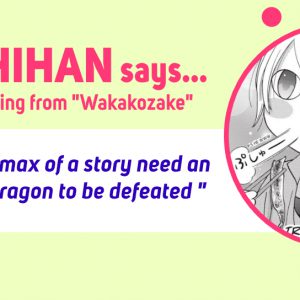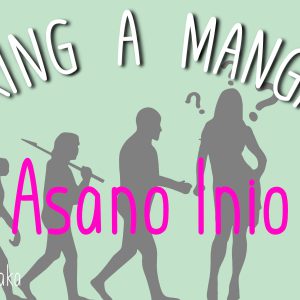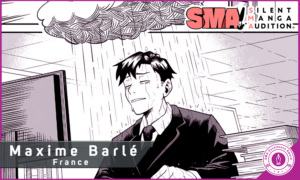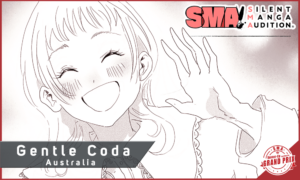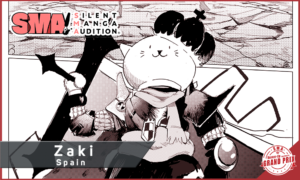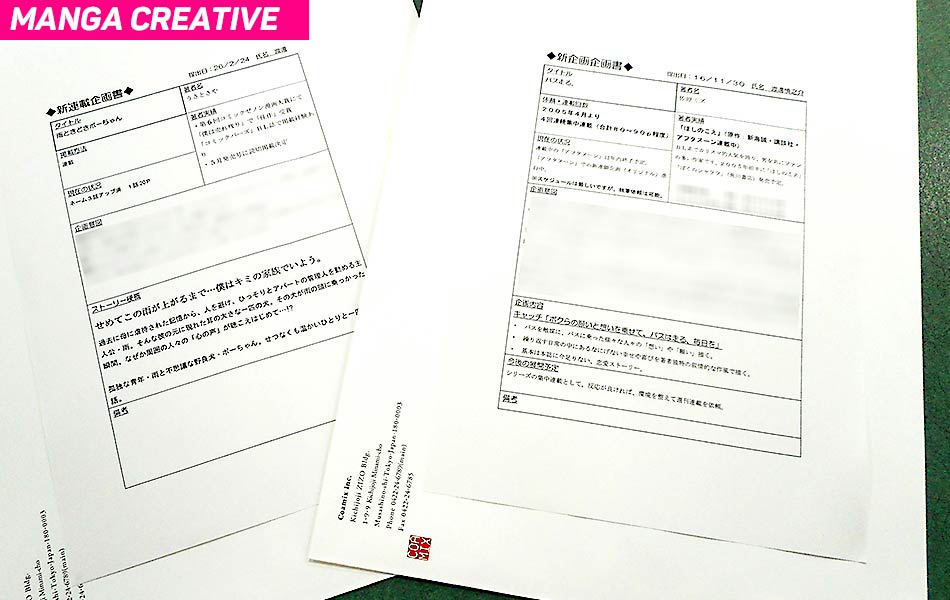
1. The path leading up to publication:
The exact process leading up to serialization (or any form of publication) differs depending on the magazine. But the basics are the same at almost every publisher – an editor prepares a proposal, and presents it to the chief editor for approval. In Monthly Comic ZENON, there are two main ways that a proposal can be made. The first way is “competition style”. This method is primarily used for newcomers and young artists. The editor writes a proposal, and together with the “name” of the first 3 episodes of the manga and a character design chart, these are put together into an envelope, and added to the “name” box. The other editors look at the materials submitted and write their opinions on the back of the envelope.
This is the “Name Box” for the Comic ZENON editorial team. It looks well-used!
After being reviewed by every member of the team, each manga is then presented and discussed during the weekly editorial meeting. The editor in charge of the manga would make a brief presentation, and explain the reason why the manga would sell (or the reason why the manga should be published), to convince the other editors. After listening to what he has to say, the other editors can then make suggestions. In this way, each work is evaluated by the whole team. Lastly, they move onto the final discussion, where the editors with authority decide whether or not it should be published.
In the case of Comic ZENON, Mr. Watanabe and the vice-chief editor Mr. Hisanaga are the ones to make the final decision about what gets published. Likewise, for the Web Magazine Comic ZENYON, Mr. Watanabe and vice-chief editor Mr. Akiyama have the final say.

In this meeting, a manga brought by Tanaka-san (The man on the left, writing down a memo) came up for discussion.
The other way is “Request style”. In this case, a well-known artist who has certain achievements will be requested to draw a new series.
First, an editor comes up with an idea that he would like someone to draw. He takes this suggestion to the chief editor, and if he gets approval, he can then approach the artist. Just like the competition style, the artist must submit 3 episodes worth of manga, and a character chart. This will then be presented directly to the chief editor, who will make the final decision.
The big difference between this and competition style, is that it doesn’t have to be checked by the whole team. When a newcomer presents their work, their abilities are still unknown. As such, MONTHLY COMIC ZENON, who inherited the system from Weekly JUMP, simulates a “Competition”, where new artists must compete with each other for limited magazine space. On the other hand, with request style, the artist’s abilities have already been confirmed, so there’s no need to put them through a trial by fire.
If you’re a newcomer who wants to have a serial, first you have to prove your ability by winning a manga award. As explained in the previous article, even if you begin with “Mochikomi”, winning a manga award is still regarded as necessary to put you on the road to debuting!
If you accomplish this, the next step would be to publish a “One-Shot” story. To be able to create a long-running hit series, you must first be able to draw a short story, extremely well! This is an important training phase for new artists. They need to gain valuable experience here before they can move onto the next stage.
2. How to create a proposal:
Here’s a picture of the actual proposal sheets, written by an editor.
Here at Comic-ZENON, we always begin by planning the story for two volumes of manga (Tankoubon). This doesn’t mean that every series is going to be two volumes, it’s just a general rule of thumb.
If your manga is well received by the readers, you’ll have the opportunity to create more! On the other hand, you can NEVER make excuses like “This is going to be a 10 volume story, and the pace is going to pick up from volume 5″… If a story doesn’t sell from volume 1, there will be no reason for us to continue the story at all. It’s important to completely grab the hearts of the readers within the first 2 volumes. Always remember, the most important thing in manga is “Grabbing the reader’s attention”!
Even though an editor takes on a lot of the responsibility of planning a new series, the primary function of an editor is to help artists improve on their own ideas. An editor may provide assistance at all levels, so an artist will have less to worry about, and concentrate on the core task of being a manga artist – creating good, strong stories.
There are times when an editor puts forward his or her ideas and opinions. Suppose that the magazine needs a new genre. Or that the readers are demanding a specific type of manga. Or perhaps there’s a social trend that the magazine wants to pick up on. In these cases, an editor may be more vocal with their thoughts, but we still regard this as one part of “Assisting an Artist”. Mr. Watanabe puts it as : “It always works best, if ideas that come from the artists themselves are put to use”.
On occasions, an external person brings us a plot or a story for manga, and requests that an artist draws it. These plans are seldom accepted, as we always put manga artist’s ideas first, before anyone else’s.
In the case of manga that require specialist knowledge, there may be a writer assigned in addition to the artist, to help with the script. For example, in ZENON, there are several series that deal with real historical events, such as ‘Ikusa no Ko(Child of War)’, ‘Gifuu Doudou’ and ‘Chiruran’ (These manga are based in 15th Century Japan – the time of Warlords, and the late 19th century – the time of Samurais) and other series which require a high level of specialist knowledge, such as ‘Concierge Imperial’ (a series about nursing for the elderly) or ‘Manga Senmon Gakkousei no Seishun’ (a series about a manga school). There are also the ‘Hokuto no Ken (Fist of the North Star)’ spin-off series ‘DD Hokuto no Ken’ and ‘Hokuto no Ken – Strawberry Flavour’. And there’s series like ‘Mononoke’, which is a manga adaptation of an anime, based on the story written by the creators of the original anime. Contributions by a writer is one tool we can use to bring the out a manga artist’s strength. However at the end of the day, the manga belongs to the manga artist. Unless there’s a very specific reason, we do not assign a writer to do work for an artist. If you have a great plot that you would like someone to draw, it would be best to find a partner by yourself, and be ready to adapt your story, so that it fits the drawing style of the partnering artist.
Let’s take a closer look… We have the title, the artist’s name, the plan (one-shot? series?), current status, the artist’s achievements, the purpose, the story outline, etc.
3. Freedom of Expression vs. Social Acceptance.
When you’re creating a new story for the public to see, one difficulty that keeps on coming back is “Balancing Freedom of Expression vs. Social Acceptance”. Common examples are sex, gore and violence… these are all things that will make the editors question the wisdom of publishing a particular piece of manga. Mr. Watanabe says, when judging these cases, there are two questions that we keep asking ourselves:
The first is “Will the expressions in this manga hurt anyone?” Manga is entertainment. In other words, it exists to make people happy. So we definitely don’t want any of the readers to feel bad after reading one of our manga titles. If there is a possibility of the manga hurting someone, it’s best to find another way of expressing the subject.
Secondly “Is this expression absolutely necessary?” For example, if the character is supposed to be sexually attractive, we might want to draw a shower scene to illustrate that. Or perhaps a violent scene might be necessary to advance the story. Still, at times like this, we still need to be careful, and consider if there isn’t another way to present the same effect.

Mr. Watanabe strictly points out any problems, since he is the one responsible for all the manga published on ZENON and ZENYON. “Don’t bring a plan you think isn’t good enough. That’s not just for the reader, nor our profit, but ultimately for the artists themselves.”
There may be varying policies on this topic. Our chief, Mr. Watanabe strongly believes that “Extremity” on its own should never be made a manga’s selling point. This does not mean that we are naysayers to graphical contents. There may be images that are of extremely graphical nature, but only when they are absolutely necessary to make the story work. We only include those scenes, when the theme, story and reader experience justify them.
4. The end of a series.
What has a beginning, must also come to an end. An editor’s job, is making that “end” lead to “a new beginning”.
The task of deciding what manga to end also belongs to the chief editor. Taking into account the original serialization schedule, the condition of the artist and several other factors, the chief editor announces when a series will finish. At ZENON, this is usually decided about 6 months in advance. This is so that there’s time to draw at least one more volume’s worth of content. No one wants to end the manga halfheartedly in the middle of the story. The artist must end it convincingly, in a way that satisfies the readers.
A popular manga may be extended in response to the reader’s demands. However, even in that case, it just doesn’t work if a series is extended against the artist’s will. Manga artists are human like anyone else. They get tired and stressed if a series continues for too long, and that fatigue is reflected in their work. Pictures look rushed, backgrounds are drawn halfheartedly… when these symptoms start to appear, one option is to terminate the series. On the other hand, if we see more potential in the artist, we might extend the series, even if the results aren’t good from a business perspective.
“Series almost never end because of the artist running out of ideas”. No, it might be more accurate to say that “It’s the editor’s job to make sure that the artist never run out of ideas”. According to our boss Horie-san, “You make the next episode by reading the previous one.” You re-read the older episodes and you ask yourself “why did the character do that?” or “why did that happen?” Your questions and doubts are probably the same as the reader’s. Use them to plan your next episode. In this way, you can endlessly continue a story.
When would be the ideal time to end the series, for the sake of the manga artist, and the manga itself? They might want to continue the current series for a long time, or they might want to finish it up and move onto something new. The editor also needs to take these feelings into account. And so, the end of a series doesn’t have to be a negative thing. As such, making these decisions is part of “Producing” a manga artist.
And that is the process that leads up to a serial! While writing this article, I strongly felt that an editor needs to be able to pay attention to what’s going on around him, and the work as a chief editor is the prime example of that.
I hope that you got a bit of an idea about how a manga magazine operates.
In the next episode, I will be jumping out of our office AGAIN!! The ZENON editorial team and the SMAC! editorial team will be going to a training camp!
What will happen there? What kind of things can I learn? I’m so excited to know!
What would you like to know about the manga world? Or, if you had to plan a serial, what would it be about? Please leave your opinions and comments below!
[catlist name=”MANGA INSIDER MAYU” thumbnail=”yes” thumbnail_size=160 content=”no” date=”yes” dateformat=”M j, Y G:i” template=page_list]





